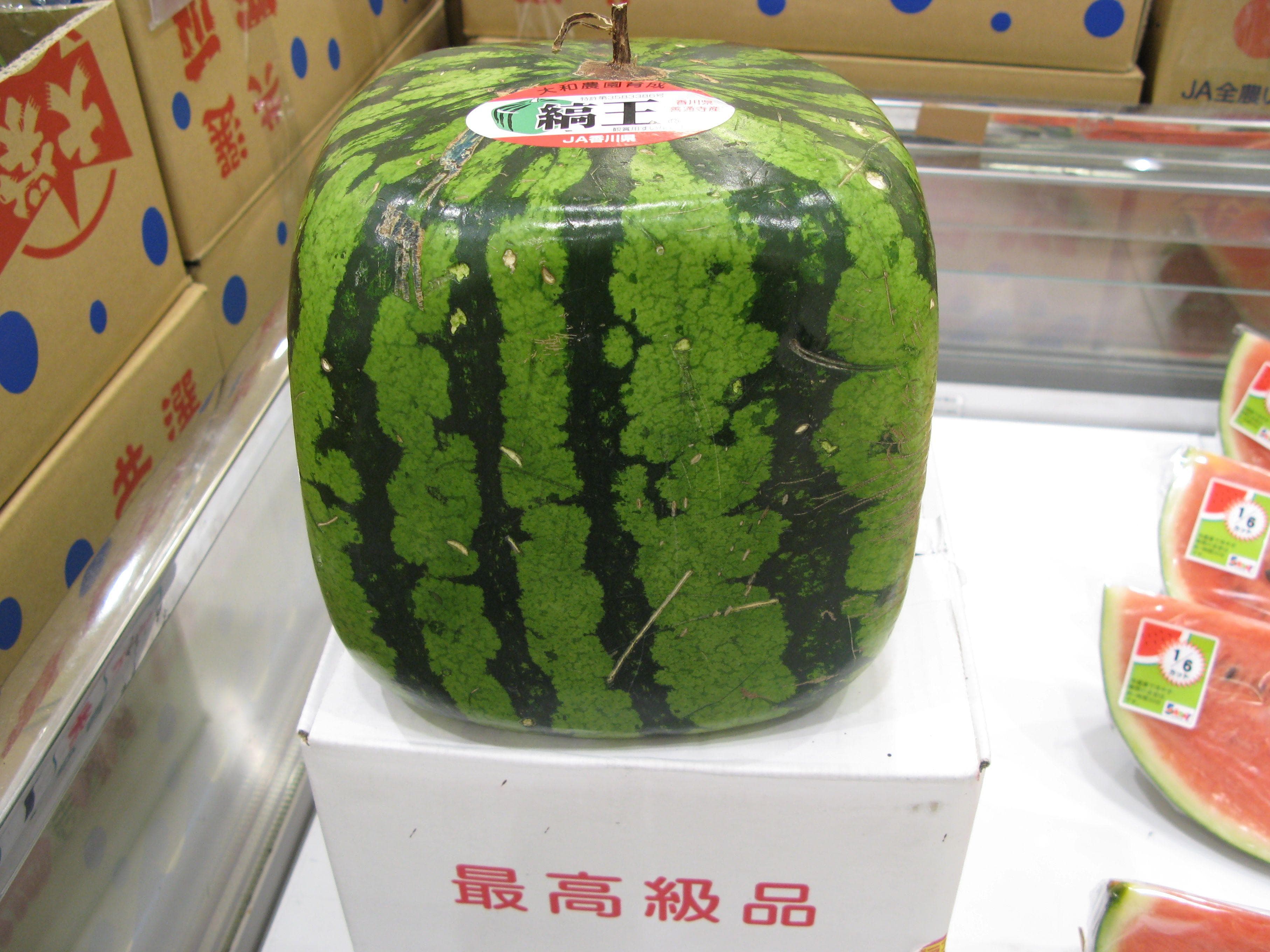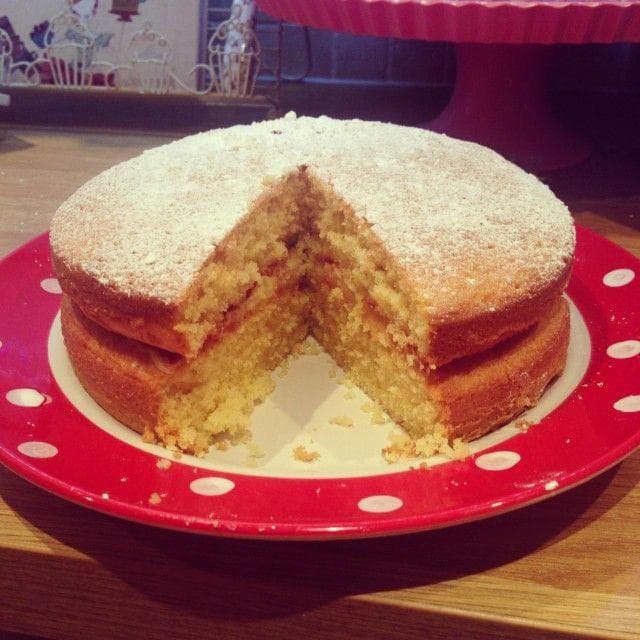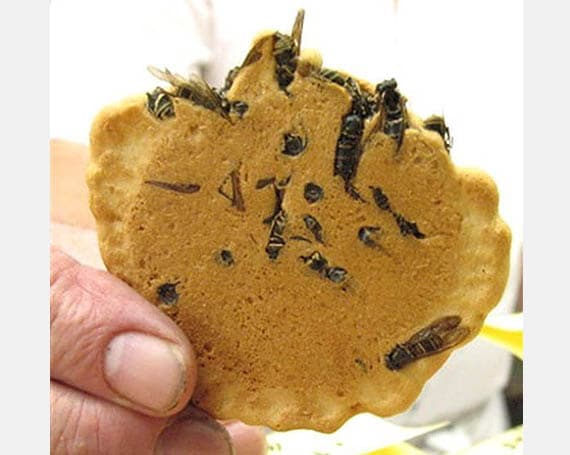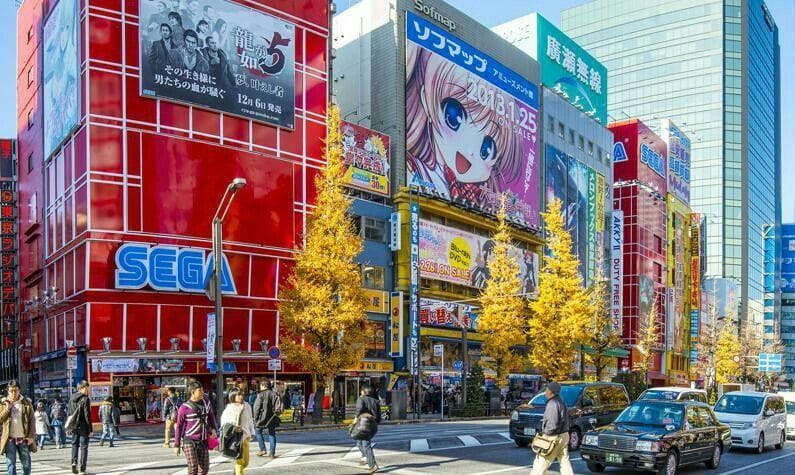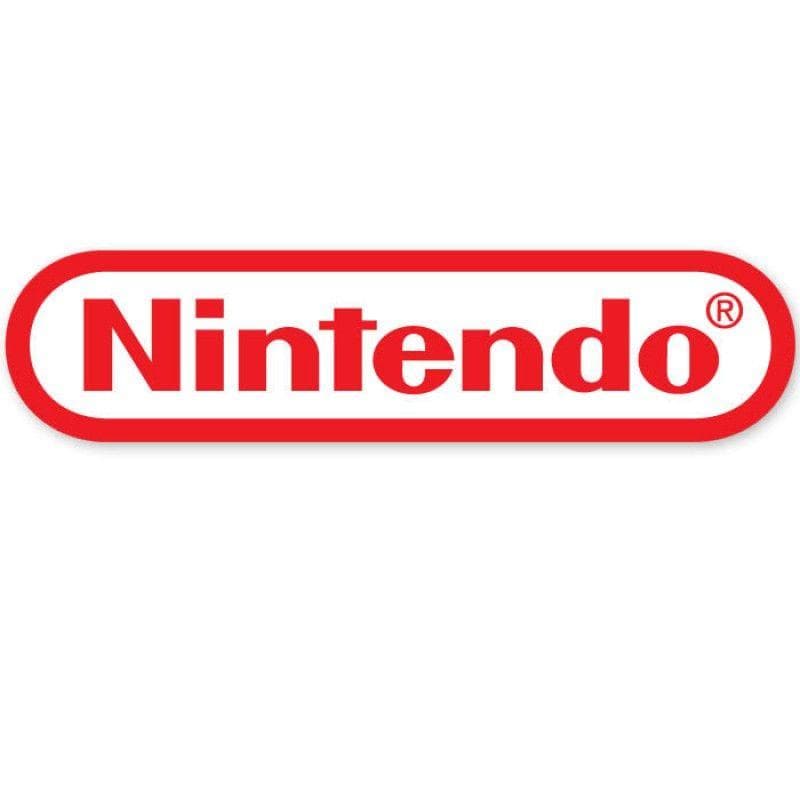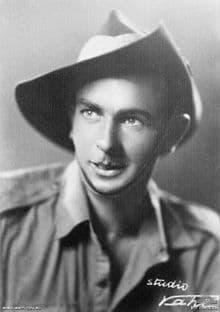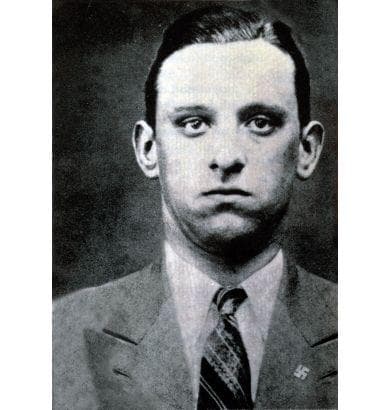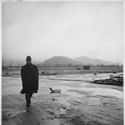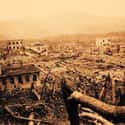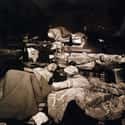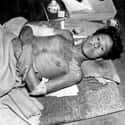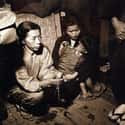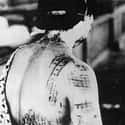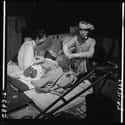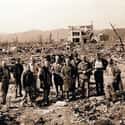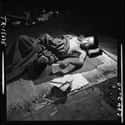-
(#1) They Had To Decide What To Do With The Remains Of Their Loved Ones
Yoshiro Yamawaki recalls the aftermath of the blast in Nagasaki. Thousands of families were left with the decision of how to dispose of their loved ones' remains. Yamawaki and his brothers found the remains of their father inside a factory. They made the decision to cremate him.
The Yamawaki brothers propped their father against a pole outside the factory where they discovered him and set his remains on fire. When they came back the next day, however, things had not gone according to plan:
When we returned the next morning to collect his ashes, we discovered that his body had been partially cremated... I could not bear to see my father like this... my oldest brother... [suggested] that we take a piece of his skull - based on a common practice in Japanese funerals in which family members pass around a tiny piece of the skull with chopsticks after cremation - and leave him be.
As soon as our chopsticks touched the surface, however, the skull cracked open like plaster... My brothers and I screamed and ran away, leaving our father behind. We abandoned him, in the worst state possible.
-
(#2) Those Who Survived The Blast Were Stigmatized
Those who survived the atomic attacks on Hiroshima and Nagasaki, called hibakusha, faced discrimination in Japan. Because of misconceptions regarding how radiation poisoning occurs, many communities shunned survivors for fear the radiation would be passed onto them. For instance, survivor Chiyono Yoneda recalls giving lotus roots to her neighbors then finding them in the trash the next day. A child at Yoneda's daughter's school told her his parents tossed the roots for fear that they would transmit the genbaku, which means "atomic bomb" in Japanese.
Japanese citizens continue to live with the fear of radiation sickness - many not fully understanding how it's contracted. The discrimination also affects children of survivors. One woman was engaged to be married until her fiance discovered her father was a survivor. Another man recounted not receiving a job offer after he disclosed his mother was a survivor.
-
(#3) Hiroshima Became 'The City Of Yakuza,' Notorious Japanese Gangsters
Hiroshima became known for its high concentration of Yakuza members, which Emiko Okada attributes to the large number of orphaned children left to provide for themselves after the atomic attacks wiped out their families:
They [committed unlawful acts] to get by. They were taken in by the wrong adults. They were later bought and sold by said adults. Orphans who grew up in Hiroshima harbor a special hatred for grownups.
Okada, too, attributes the atrocities inflicted on Japan to adults. After the attacks, she lost her sister and grew so ill that she vomited and her gums bled. Okada now calls on adults to protect the "lives and dignity" of children.
-
(#4) Young People Had To Raise Their Siblings After Their Parents Passed
Kumiko Arakawa, who was only 20 when the US attacked Hiroshima and Nagasaki, recalls having to provide for her younger siblings. Her mother, her father, and four of her sisters passed, all within three days of the attacks.
Forced to support her surviving family members, Arakawa couldn't recall how she managed to provide food or put her remaining sisters through school. In fact, she can't remember much of the attack at all:
Some people have asked me what I saw on my way home the day after the [attack], on August 10 - "surely you saw many... bodies," they would say - but I don’t recall seeing a single corpse. It sounds strange, I’m sure - but it is the truth.
-
(#5) Those Hurt Laid In Hospitals, Fearing Their Demise
Fujio Torikoshi was a child when the United States dropped an atomic device on Hiroshima. The force of the device sent him flying backward, and he passed out in front of a stone container filled with water. When he regained consciousness, he attempted to soothe his burns by submersing them in the water, but it only increased the pain.
Torikoshi was in and out of consciousness for several days. When he came to, doctors told him he would only live until age 20. He has survived to be over 80 years old, and says every day he "[prays] - earnestly, relentlessly - for world peace."
-
(#6) They Couldn't Give Water To Parched Victims
On the day of the Nagasaki attack, Inosuke Hayasaki recalls passing burn victims crying out for water. A passerby told him that giving the victims water would harm them. He had to make the difficult decision of providing those who weren't going to survive with what would be their last drink of water or of possibly preserving their lives for just a while longer.
Hayasaki decided to find a water source for the burn victims. He tore a piece of fabric off a futon and dunked it in a rice patty. He then wrung out the fabric over the 40 burn victims' mouths, running back and forth from the rice patty to the victims.
All of those Hayasaki gave water to that day perished. The decision continued to haunt him every day, even into old age. Dr. Hiroo Dohy of Hiroshima Red Cross Hospital & Atomic Bomb Survivors Hospital, says it's possible that giving victims water may increase their blood flow and result in further bleeding, but it's hard to generalize, as the science is largely dependent on an individual's condition.
-
(#7) Many Children Were Left Orphaned And Alone
Ryouga Suwa was in Miyoshi-shi at the time of the attack on Hiroshima, approximately 50 kilometers from the hypocenter. The rest of his family was in Hiroshima, however, and his parents and sister likely perished in the attack - although his parents are still considered missing to this day. At just 12 years old, he was left a genbaku-koji, or an orphan of the atomic attack. Suwa is one of 2,000 children orphaned by the attack.
When he returned to Hiroshima a little over one month later, he was shocked at the level of devastation:
What remained of the [temple's] property was a cluster of overturned tombstones from the... cemetery. Hiroshima was a flat wasteland. I remember feeling shocked that I could make out the Setonai Islands in the distance, which used to be inhibited by buildings.
-
(#8) It Took Years For Some People To Fully Heal
During the US attack on Nagasaki, Sumiteru Taniguchi was delivering mail. When the device hit, the skin peeled off his back and arms. He stayed in a hospital in Omura, forced to lie on his stomach for one year and nine months. He formed bed sores that left scars up until his passing in 2017.
Altogether, Taniguchi stayed in the hospital for three years. However, he didn't receive the treatment he needed until 15 years after the event. He suffered chronic pain and developed a cancerous tumor at the site of his burns. Radiation-related illnesses took his life in 2017.
-
(#9) Most People Who Searched The Streets For Family Members Perished Soon After
Junji Sarashina, who survived the attack on Hiroshima, shared his story with a Buddhist discussion group. He recalls being knocked flat on his face, which saved him from being burned as badly as he could have been. Sarashina remembers parents searching streets near the hypocenter for their missing children. Those parents were exposed to dangerous levels of radiation, and many perished days later.
Sarashina doesn't believe there is hell in the afterlife, because he believes he saw hell on Earth that day. But he also believes the Buddhist concept of heaven, or the Pure Land, exists on Earth, as well:
If I am enjoying having a conversation with a friend, or I am enjoying having dinner with my family, what can be better than that? Isn’t that the Pure Land? Why should the Pure Land be something that I have to wait until [the afterlife] to know?
-
(#10) Japanese Citizens Who Survived The Nuclear Blasts Suffer From Cancer And Other Illnesses
The devices the United States dropped on Hiroshima and Nagasaki exposed thousands to dangerous amounts of radiation. In tests conducted on the bones of the devices' victims, scientists discovered they had absorbed 9.46 grays (Gy) of radiation. To put that number into perspective, patients receive two to three Gy in localized areas to combat tumors, while five Gy of total-body radiation are enough to end a person.
Because of this exposure, many survivors of Hiroshima and Nagasaki suffer from cancer today. Yoshiro Yamakawi has stomach cancer and has undergone surgery twice. Doctors have diagnosed Sunao Tsuboi with two types of cancer, and he's been hospitalized 11 times.
Around two years after the US dropped atomic devices on Japanese citizens, leukemia rates spiked among children. Ten years later, cancer rates spiked among adults. Around 10% of cancer patients in Hiroshima and Nagasaki developed their illnesses from high concentrations of radiation.
-
(#11) During The United States' Subsequent Occupation Of Japan, They Kept The Effects Of Radiation Top Secret
Five days after the United States dropped an atomic device on Nagasaki, Japan surrendered, and the US began its occupation. The government heavily censored information about the effects of radiation. They silenced those who were outspoken about the illnesses it caused and forbade the press from writing about its effects. The US even distributed information that lied about the long-term dangers of atomic devices.
When Japanese officials conducted medical research into the effects of radiation, the US confiscated their findings and sent them to the United States, where they were classified. It was very difficult for Japanese citizens to get the help they needed. Dr. Shuntaro Hida, Hiroshima survivor and one of the leaders in Japan's Council of Atomic Bomb Sufferers, recalls:
If a victim went to the doctor, he wasn't supposed to tell the doctor he'd been exposed to radiation. And if he did say so, the doctor would usually say, 'Please don't tell me because we'll both be punished.'
-
(#12) Many Suffered Devastating Psychological Effects, Such As PTSD
Japanese psychiatrist Masao Nakazawa called the devastation caused by the Hiroshima and Nagasaki attacks "the worst PTSD in human history." Tomiko Shoji survived the attack on Hiroshima and for years she suffered psychologically. Lightning and thunder would "crush [her]" and "cause [her] to lose control." Shoji had panic attacks at night and showed little emotion toward her children.
American-born Howard Kakita was living with his grandfather in Hiroshima, too, at the time of the attack. When he returned to the US after WWII, he suffered PTSD-like symptoms. Kakita couldn't eat red foods, such as meat, grapefruit, or tomato sauce, because they reminded him of the severe injuries he saw that day in Hiroshima.
-
(#13) Some Survivors Have Dedicated Their Lives To The Eradication Of Atomic Devices
Since surviving the attacks on Nagasaki and Hiroshima, many Japanese citizens have done important work advocating for peace and the eradication of atomic devices. Sunao Tsuboi, for instance, began working at the Japan Confederation of A- and H-bomb Sufferers Organizations after he retired from his job as a middle school principal.
Similarly, Sumiteru Taniguchi became secretary general of the Nagasaki Atomic Bomb Survivors Council. He shows photos taken during his time in the hospital, where his skin peeled off his back and arm. As an activist, Taniguchi participated in anti-nuclear marches and spoke out against atomic devices until his passing in 2017.
New Random Displays Display All By Ranking
About This Tool
During WWII, the United States dropped atomic bombs on Hiroshima and Nagasaki, which accelerated the end of the war in the Pacific region and launched the era of nuclear weapons. The final deaths in Hiroshima atomic bomb reached 135,000, far more than twice that of Nagasaki, even though the atomic bomb in Nagasaki was more powerful. Those who survived the atomic bombing disaster have been threatened by nuclear radiation and harmful substances throughout their lives, facing challenges such as rehabilitation and life reconstruction.
In this war disaster, thousands of Japanese residents were turned into steam by high temperature and strong light. Many survivors even had only two empty eye sockets, bone marrow necrosis, and many pregnant women gave birth to malformed fetuses. The random tool shares 13 details about life in Japan after the atomic bomb.
Our data comes from Ranker, If you want to participate in the ranking of items displayed on this page, please click here.

